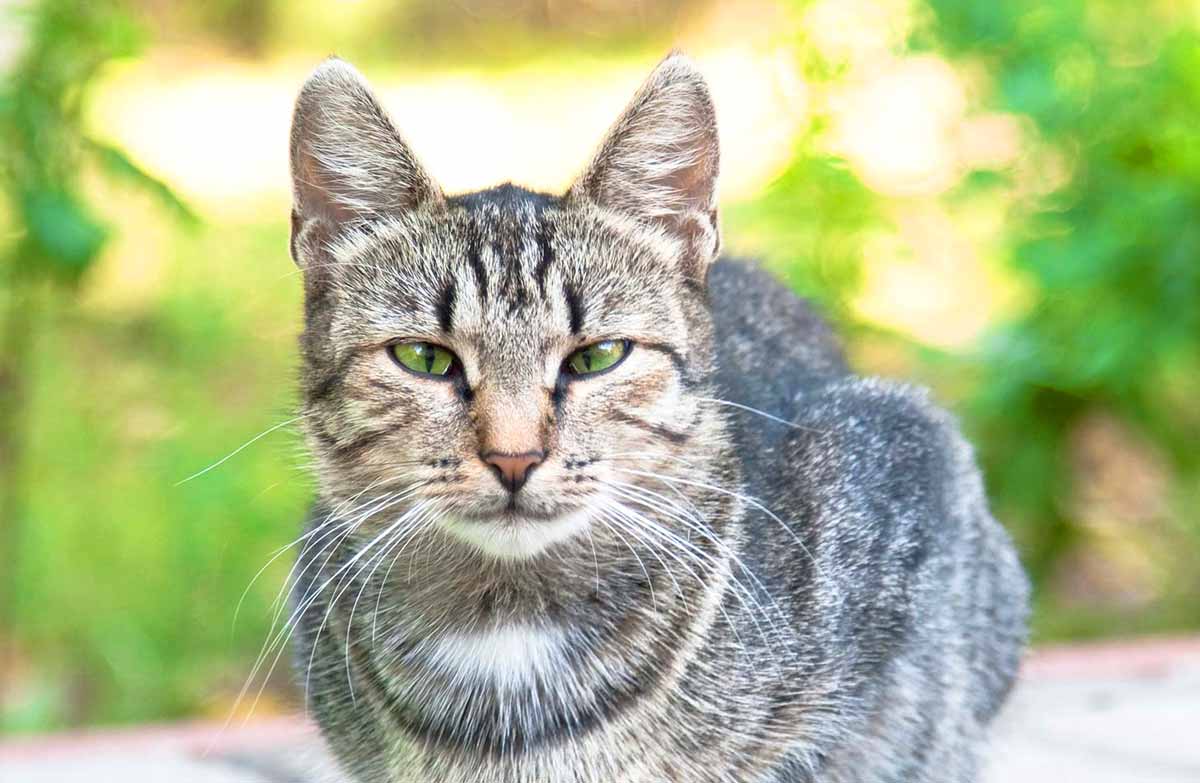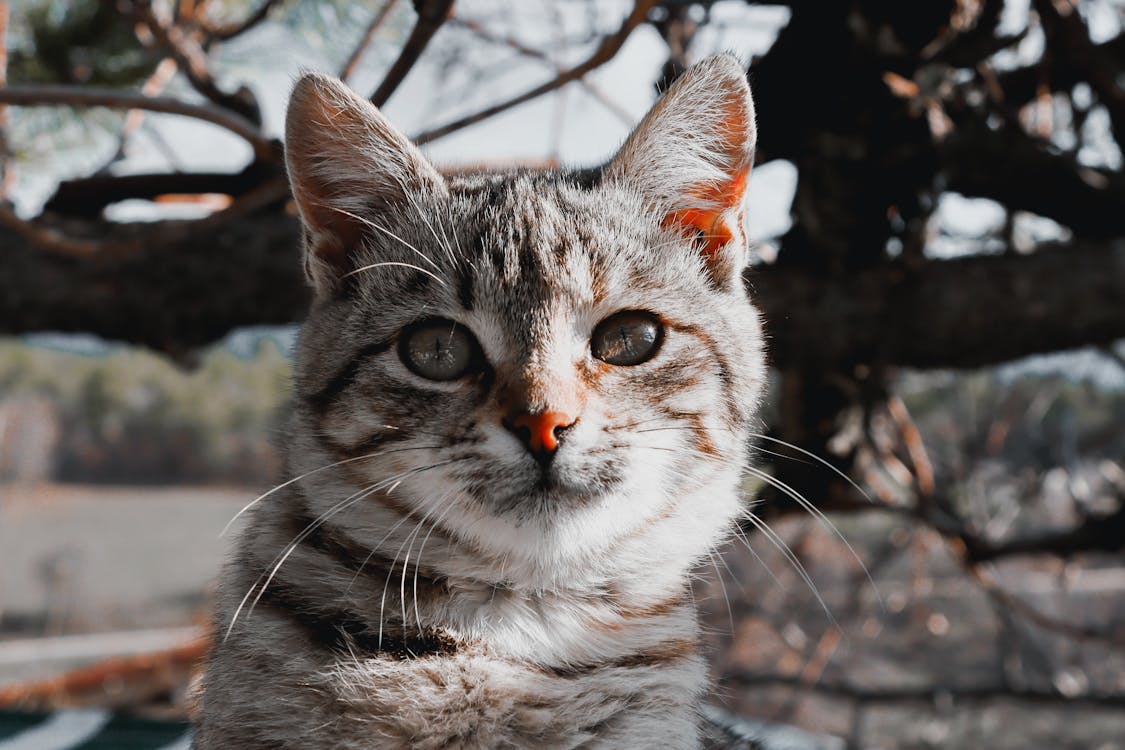Giardiasis in cats, imagine this: it’s just another day, and you’re enjoying a cuddle with your beloved cat. Suddenly, you notice a change in their litter box habits – persistent diarrhea. A wave of worry washes over you. Could it be a parasite? The thought of tiny unwelcome guests in your cat’s system is enough to send shivers down any pet owner’s spine.
Fear not! This article equips you with all the knowledge you need to understand giardiasis in cats, a common parasitic infection. We’ll delve into the world of the microscopic culprit, Giardia, explore how cats become infected, and most importantly, empower you to recognize the signs and take action to ensure your feline friend’s health and well-being.
Unveiling the Microscopic Culprit: Giardia
Giardia is a single-celled parasite that can take up residence in the intestines of cats (and other animals, including humans!). Imagine tiny hitchhikers clinging to the walls of your cat’s digestive system, disrupting the natural balance and causing discomfort. While the thought might be unsettling, giardiasis is a treatable condition with prompt diagnosis and proper care.
Transmission: How Do Cats Catch Giardia?
Giardia spreads through the fecal-oral route. This means that if an infected cat eliminates cysts (a protective shell Giardia forms) in their stool, and another cat comes into contact with those cysts, the second cat can become infected. Here’s how it can happen:
- Sharing a litter box: If one cat in a multi-cat household has giardiasis, the others are at higher risk of infection by sharing the contaminated litter box.
- Exposure to contaminated environments: Giardia cysts can survive in the environment for weeks, especially in cool, damp places. This means your cat could become infected by ingesting contaminated water sources, soil, or even by walking on surfaces where an infected animal has been.
- Grooming: Cats are meticulous groomers, and if they come into contact with the feces of an infected animal while grooming themselves, they can ingest cysts and become infected.
Recognizing the Signs: When to See Your Veterinarian
Early detection and treatment are key to a speedy recovery from giardiasis. Here are some signs to watch out for:
- Diarrhea: This is the most common symptom of giardiasis in cats. The diarrhea can be soft, watery, or even bloody. It may also be accompanied by mucus.
- Weight loss: Due to the disruption in the digestive system caused by the parasite, your cat may have difficulty absorbing nutrients from their food, leading to weight loss.
- Lethargy: If your cat seems less energetic or playful than usual, it could be a sign that they’re not feeling well.
- Vomiting: While less common, some cats with giardiasis may also experience vomiting.
Important Note: These symptoms can also be caused by other health issues. If you notice any of these signs in your cat, it’s crucial to consult your veterinarian for a proper diagnosis and treatment plan.
The Microscopic Menace: Introducing Giardia
Imagine a tiny hitchhiker, so small it’s invisible to the naked eye, hitching a ride on your feline friend. This microscopic menace is Giardia, a single-celled parasite that can cause intestinal woes in cats. While it might sound scary, giardiasis (the infection caused by Giardia) is a treatable condition with a good prognosis when caught early. Let’s delve deeper into the world of Giardia, understanding its life cycle and how it spreads, so you can keep your furry companion healthy and happy.
A Single-celled Surprise: Unveiling Giardia
Giardia belongs to a group of organisms called protozoans. Unlike the multicellular creatures we’re familiar with, like cats or dogs, protozoans are single-celled. Think of them as tiny, independent amoebas with the ability to cause mischief in our feline friends’ intestines. While Giardia can infect various mammals, including humans and dogs, this article will focus on its impact on our whiskered companions.
Life Cycle Stages: A Tale of Cysts and Trophozoites
Understanding Giardia’s life cycle is crucial for preventing and diagnosing infection. Here’s a simplified breakdown:
-
Cyst Stage: Giardia spends part of its life cycle in a dormant, cyst-like form. These cysts are incredibly resilient, allowing Giardia to survive for weeks in the environment, such as in soil or water. Think of them as tiny time capsules, waiting for the right opportunity to unleash the next stage of the parasite.
-
Trophozoite Stage: When an unsuspecting cat ingests a cyst, it travels to the intestines. There, the cyst wall breaks open, releasing a motile (able to move) form of Giardia called a trophozoite. These trophozoites attach themselves to the intestinal wall, feeding on nutrients and multiplying.
-
Shedding and Transmission: The trophozoites eventually detach from the intestinal wall and are passed in the cat’s stool. Some of these trophozoites encyst again within the feces, creating new infectious cysts that can spread the infection to other animals.
Knowing these life cycle stages is important because diagnosis often relies on identifying Giardia cysts in a cat’s stool sample. Additionally, understanding cyst persistence in the environment highlights the importance of proper hygiene practices to prevent the spread of Giardia.
Shedding and Transmission: A Stealthy Spread
Giardia is a sneaky hitchhiker, spreading through fecal-oral transmission. Here’s how it happens:
-
Infected Cat: A cat harboring Giardia sheds cysts in its stool. These cysts can be microscopic and easily missed during casual litter box cleaning.
-
Contaminated Environment: The cysts can survive for weeks in the environment, lurking in soil, water, or even on surfaces contaminated with infected feces.
-
Unwitting Ingestion: Another cat, curious and perhaps drawn to the scent, might come into contact with the contaminated environment and accidentally ingest the cysts. This restarts the Giardia life cycle within the new feline host.
Knowing how Giardia spreads empowers you to take preventative measures. Maintaining a clean litter box, practicing good hygiene, and preventing your cat from roaming in areas potentially contaminated with feces are all crucial steps in keeping your feline friend safe from this microscopic menace.
Pathways to Infection: How Cats Contract Giardia
Giardia, a microscopic parasite, can sometimes take up residence in our feline companions’ intestines, causing a gastrointestinal illness called giardiasis. While it might sound scary, giardiasis is a treatable condition with a good prognosis when caught early. Understanding how cats become infected with giardia empowers us to take preventive measures and ensure our furry friends stay healthy.
Hitching a Ride: Ingestion of Contaminated Material
The primary culprit behind giardia infection in cats is the sneaky giardia cyst. Imagine a microscopic time capsule – these cysts are the tough outer shell that protects the giardia parasite, allowing it to survive harsh environments like soil or water for weeks, just waiting for an unsuspecting host. Unfortunately, for our feline friends, this unsuspecting host can sometimes be them.
Here’s how cats can ingest these unwanted hitchhikers:
-
Direct Contact with Infected Feces: Cats are naturally curious creatures, and sometimes their curiosity can lead them to explore…well, let’s just say, less than desirable areas. If an infected animal has left its mark in a litter box, shared outdoor space, or other environment, your cat might come into contact with the contaminated feces, either directly or by sniffing it. Since giardia cysts are present in feces, this puts them at risk of ingesting the cysts and potentially contracting the infection.
-
Indirect Contact: Even if your cat is the picture of feline etiquette and avoids direct contact with feces, there’s still a chance of encountering giardia. Cysts can stick to fur, paws, or even shoes, and be unknowingly transferred to food bowls, bedding, or other surfaces your cat frequents. This indirect contact can also lead to them ingesting the cysts and developing giardiasis.
Environmental Exposure: Beware of Contaminated Areas
The environment can also play a role in the spread of giardia. Here are some situations to be aware of:
-
Shared Litter Boxes: Multiple cat households require extra vigilance. If one cat has giardia, the shared litter box becomes a high-risk zone for transmission. Meticulous cleaning and disinfection become even more crucial in these situations.
-
Contaminated Water Sources: While uncommon, stagnant water sources like puddles or ponds can harbor giardia cysts. If your cat is an outdoor adventurer, be mindful of their water source and consider providing them with fresh, clean water at home.
-
Exposure to Wildlife: Wildlife like rodents or birds can also carry giardia. If your cat enjoys hunting or spending time outdoors, this can be a potential risk factor.
Spreading the News (…Not the Best Kind): Self-Infection and Cat-to-Cat Transmission
While less common, it’s important to be aware of two other potential transmission routes:
-
Self-Infection: Cats who groom themselves frequently might accidentally ingest giardia cysts from their own fur if they’ve come into contact with contaminated material.
-
Cat-to-Cat Transmission: Direct contact with an infected cat’s rear end is another potential route, although less likely than ingestion of contaminated material.
By understanding these pathways of infection, we can take proactive steps to safeguard our feline companions and keep them giardia-free. In the next section, we’ll explore the signs and symptoms of giardiasis in cats, so you can be well-equipped to identify any potential issues.
Final thought: A Team Effort for a Healthy Cat
Early detection and treatment of giardiasis are crucial for ensuring your cat’s health and well-being. By understanding the signs and symptoms, and working closely with your veterinarian, you can effectively address the infection and get your feline friend back on track to a happy and healthy life.
Remember, maintaining a clean environment, practicing good hygiene, and following recommended preventative measures are your allies in keeping giardiasis at bay. With a proactive approach and a supportive veterinary team by your side, you can create a loving and healthy home for your cherished cat companion.
Other Interesting Articles
- How To Take Care of A Baby Kitten 2 Weeks Old: 6-Step Guide
- 20 Famous People and Legends Who Loved & Had Pet Cats
- How To Tell If A Cat is Male/Boy or Female/Girl: Tips, Guide
- A Guide to Socializing Shy, Frightened, or Traumatized Cats
- How to Stop A Cat From Spraying Indoors: Home Remedies
- How to Help Cats Get Along with a Kitten Step-By-Step
- How To Tell If Your Cat Has A Triple Coat: 7 Simple Steps
- How To Tell If Your Cat Has Down Syndrome: Signs & Myths
- 11 Signs Your Cat is a Girl: Tips To Distinguish A Female Cat
- Petting A Shy Cat: A How-To Guide, Tips, Dos, Don’ts, FAQs
- How To Tell If Your Cat Has Fleas: Best Tips To Take Care
- How To Tell If Your Cat Can’t Hear: 10 Tips To Help A Deaf Cat
- Why is My Cat Making A Weird Vibrating Noise: What To Do
- How To Tell If A Shy Cat Likes You: 14 Signs To Observe
- How To Stop A Cat From Spraying Outside: 20 Tips To Try
- How To Tell If My Cat is in Pain After Surgery: 17 Implied Signs
- How to Take Care of A Kitten For the First Time: 20 Tips
- 20 Prohibited Things You Should NEVER Do To Your Pet Cat
- What to Know Before Getting a Second Cat: Tips & Guide
- What Scents and Smells Do Cats Hate? How To Deal With




